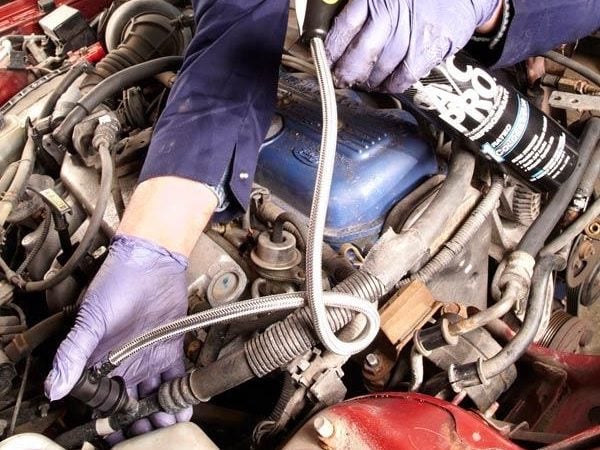
DIY Car Maintenance: Recharge Your Car’s A/C
If your A/C system blew ice-cold air last year but barely cools now, chances are it lost some refrigerant over the winter. That happens in older vehicles when the aging seals contract and some refrigerant leaks out.
Topping off the system can usually put you back in the deep freeze. That’s a job you can do yourself if your vehicle was made after 1993 and is filled with R-134a refrigerant (check the label under the hood or the specifications section of your owner’s manual to be sure).
Note: Some regions impose restrictions on the sale of R-134a refrigerant to consumers. In some cases, the cans may have a different design, requiring different charging procedures. Recharging won’t fix all A/C problems. But if you’re willing to gamble about $50 on a recharging kit, you might be a cool dude in less than an hour. You can save about $100 in labour costs by doing the job yourself.
Stop at any auto parts store and pick up an R-134a A/C recharging kit. I used the A/C Pro product shown here because it came with a reusable gauge and a quick-connect fitting, and the refrigerant contained a seal conditioner additive. But you can use any brand. Warning: The electric A/C compressors in hybrid vehicles are incompatible with the oils and seal conditioners used in many retail recharging kits. Using the wrong kit can result in a lethal electrical shock. Check the product’s label for compatibility with your hybrid vehicle before buying. If you’re not sure, take it to a pro.
Caution: Refrigerant can cause frostbite and serious eye injuries if used improperly. Follow all the cautionary information in the kit instructions, and wear gloves and goggles during the procedure.
Read on for DIY car maintenance tips on how to recharge your car’s A/C:
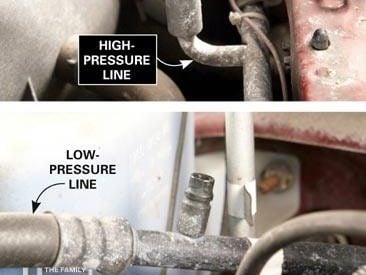
Find the Right Port
Pop the hood and find the low-pressure line and port. Compare the tubing size going to each A/C charging port. The thicker tubing is the low-pressure line and the one to use for recharging. (The port with the smaller tubing is the wrong one.)
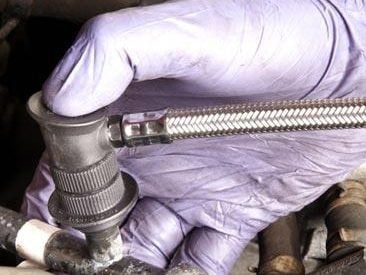
Connect the Gauge Hose
Unscrew the port cap and put it in a safe place. Support the tubing with your fingers and squeeze the connector onto the port in one quick motion. Check the pressure reading on the gauge. If it reads zero, your system is completely empty and this repair won’t work. You need to take your vehicle to a pro. If the gauge shows some pressure, start the engine and turn your A/C to “Max” and the fan to “High.”
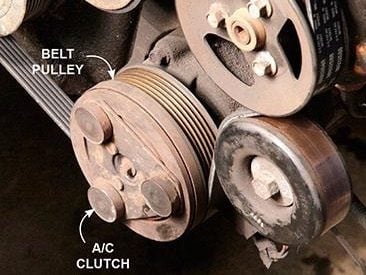
Check the Compressor Clutch
Then check the compressor clutch. If it’s spinning, add refrigerant until the gauge reaches the recommended pressure shown in the instructions. But don’t overfill! Too much refrigerant actually reduces cooling.
If the compressor clutch isn’t spinning, add one-half can of refrigerant. If it then starts spinning, continue adding refrigerant until you reach the recommended pressure. However, if the clutch won’t spin after adding half a can, stop. Your leak is too serious to handle with a top-off – it needs a pro.
When you’re done, disconnect the hose connector and reinstall the port cap.
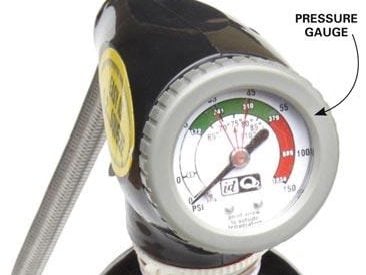
Adding Refrigerant
Hold the can upright and squeeze the trigger (or open the valve). Then rock the can from 12 o’clock to 3 o’clock until the gauge needle reaches the recommended pressure.
Protect the Environment:
Just because you can keep recharging your A/C yourself doesn’t mean you should. Leaking R-134a harms the environment by contributing to global warming. If you recharge your system and it runs low again in a few months or before next spring, you’ve got a fairly large leak. Take it to a pro and get it fixed.
Required Tools and Materials for This Project
Have the necessary tools and materials for this DIY project lined up before you start – you’ll save time and frustration.
* Pliers
* Safety glasses
* A/C recharge kit
* Plastic gloves
Looking for a new ride? Check out the new Reader’s Digest Build & Save Auto Program to see the latest incentives and exclusive discount opportunities on new cars, trucks and SUVs. Click here to shop over 30 brands!